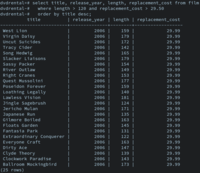
Photo from wikipedia
As a typical erasure coding choice, Reed-Solomon (RS) codes have such high repair cost that there is a penalty for high reliability and storage efficiency, thereby they are not suitable… Click to show full abstract
As a typical erasure coding choice, Reed-Solomon (RS) codes have such high repair cost that there is a penalty for high reliability and storage efficiency, thereby they are not suitable in geo-distributed storage systems. We present a novel family of concurrent regeneration codes with local reconstruction (CRL) in this paper. The CRL codes enjoy three benefits. Firstly, they are able to minimize the network bandwidth for node repair. Secondly, they can reduce the number of accessed nodes by calculating parities from a subset of data chunks and using an implied parity chunk. Thirdly, they are faster than existing erasure codes for reconstruction in geo-distributed storage systems. In addition, we demonstrate how the CRL codes overcome the limitations of the Reed-Solomon codes. We also illustrate analytically that they are excellent in the trade-off between chunk locality and minimum distance. Furthermore, we present theoretical analysis including latency analysis and reliability analysis for the CRL codes. By using quantity comparisons, we prove that CRL(6, 2, 2) is only 0.657x of Azure LRC(6, 2, 2), where there are six data chunks, two global parities, and two local parities, and CRL(10, 4, 2) is only 0.656x of HDFS-Xorbas(10, 4, 2), where there are 10 data chunks, four local parities, and two global parities respectively, in terms of data reconstruction times. Our experimental results show the performance of CRL by conducting performance evaluations in both two kinds of environments: 1) it is at least 57.25% and 66.85% more than its competitors in terms of encoding and decoding throughputs in memory, and 2) it has at least 1.46x and 1.21x higher encoding and decoding throughputs than its competitors in JBOD (Just a Bunch Of Disks). We also illustrate that CRL is 28.79% and 30.19% more than LRC on encoding and decoding throughputs in a geo-distributed environment.
Journal Title: Journal of Computer Science and Technology
Year Published: 2018
Link to full text (if available)
Share on Social Media: Sign Up to like & get
recommendations!